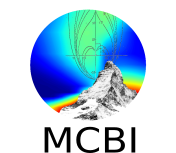Speaker
Description
The High Luminosity Large Hadron Collider (HL-LHC) Project at CERN calls for increasing beam brightness and intensity.
In this framework, it is crucial to reduce the electromagnetic coupling between the particle beams and the surrounding environment (by means of the concepts of wakefield and impedance) in order to minimize undesired effects as beam instabilities and RF-heating.
In the past the interest for the wakefield generated by two counter rotating beams crossing the same vacuum chamber has been little, only few papers about the topic appear in the literature.
However, in the interaction chambers of all colliders two counter rotating beams interact one with each other through their wakefields (among other effects).
Furthermore, other devices could experience the passage of two counter rotating beams in their vacuum chambers, as, for example, the Target Dump Injection Segmented (TDIS) in the CERN Large Hadron Collider.
Understanding the phenomenon is crucial to avoid possible instability and RF-heating problems in the future high brightness, high intensity colliders.
Thus, first this paper reviews the theory developed in previous works.
Then, it specializes this theory for some particular cases and benchmarks it against simulations results.
In particular, this is done for the case of a pill box cavity and for the case of a resistive pipe of finite length.
